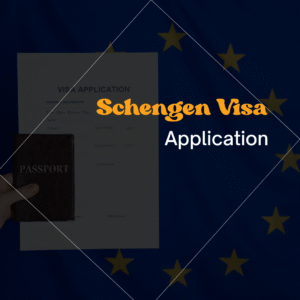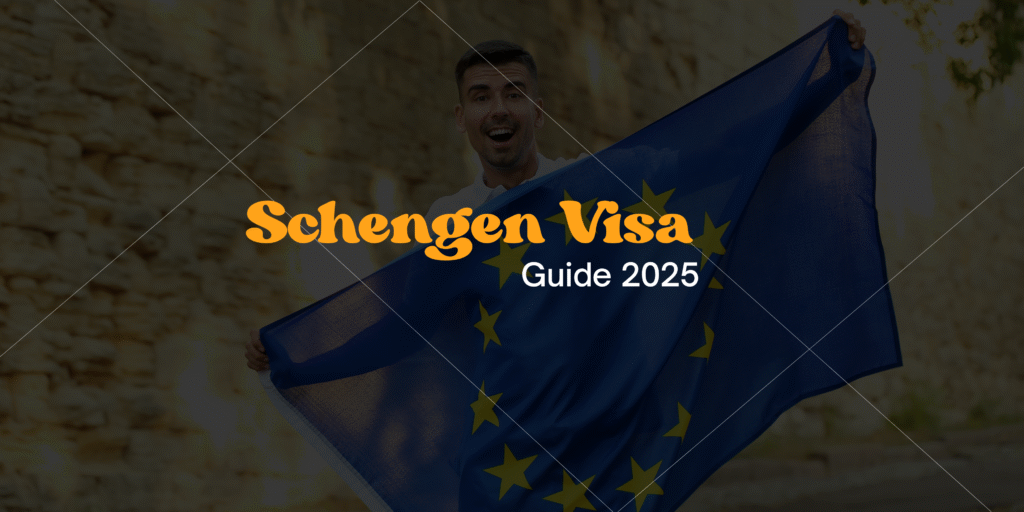Introduction
Planning to travel across Europe in 2025? The Schengen Visa is your key to visiting up to 27 European countries with a single entry permit. In this guide, you will learn everything—from Schengen visa requirements to tips for boosting your approval chances. Whether you are traveling for tourism, business, or study, this comprehensive guide will walk you through each step. And if you need expert assistance, you can reach out to a trusted partner like Prizma Travel Consultancy for tailored help:
Types of Schengen Visas
Before diving into requirements, it is important to know which type of Schengen visa you need:
Short-Stay Visa (Type C): For tourism, family visits, business trips, and short stays up to 90 days within 180 days.
Long-Stay Visa (Type D): For stays over 90 days (e.g. study, work, joining family).
Airport Transit Visa (Type A): For passengers transiting through the international zone of a Schengen airport without entering the Schengen area.
Choose the right one—applying for the wrong type is a common reason for rejections.
Schengen Visa Requirements 2025
Below is a breakdown of standard documents and conditions you will need. Always check the specific embassy or consulate’s checklist for your country of application.
1. General Documents
Valid passport (valid at least 3 months after intended departure from Schengen, with at least two blank pages).
Completed visa application form (signed).
Passport-sized photos (recent, biometric standards).
Proof of civil status (marriage certificate, birth certificate, if applicable).
2. Financial Proofs & Bank Statements
Recent bank statements (3–6 months) show sufficient funds.
Details of fixed deposits, salary slips, or proof of income.
If a sponsor is involved, a sponsorship letter with proof of the sponsor’s financial capability.
3. Travel Itinerary & Accommodation
Round-trip flight bookings (or reservation).
Reservations of hotels, hostels, or proof of stay (if staying with friends/family).
Travel plan or day-by-day itinerary inside Schengen.
4. Travel Insurance
Medical insurance covering emergencies / hospitalization, with minimum coverage of €30,000 across Schengen countries.
Must cover all Schengen states and be valid for entire stay.
Visit the embassy or visa application center. Bring original documents + copies. Answer questions honestly. Provide biometrics as required.
5. Additional / Country-Specific Requirements:
Some embassies require proof of paid visa fee, self-employment documents, invitation letters, or proof of ties to home country (job, property).
If you are applying for long-stay (Type D), additional documents like acceptance letters from universities, work permits, or proof of enrollment may be required.
Step-by-Step Schengen Visa Application Process
here is how to apply, from start to submission:

1. Determine Which Embassy or Visa Center to Apply To
If your trip involves multiple Schengen countries, apply at the embassy of the country where you will spend the majority of your time. If equal days, apply at the country of first entry.
2. Fill Out the Application:
Many consulates offer online application portals. Fill carefully—errors or missing fields may lead to delays.
3. Book an Appointment & Pay the Fee
Schedule a visa appointment (by phone or online) for document submission and biometrics (fingerprints + photo). Pay the visa fee (see later section for 2025 estimates).
4. Submit Documents & Biometrics
5. Wait for Processing.
Processing time depends on the country, but normally ranges from 7 to 15 calendar days. In busy seasons or complex cases, it might take longer.
6. Collect Your Passport
Once a decision is made, collect your passport (with visa sticker if approved). If refused, you will receive a refusal letter explaining the reasons.
Schengen Visa Fees & Processing Time in 2025
Knowing the current costs and timing can help you plan:
Schengen visa fee (Type C): Around €80 (for adults) — variations may apply by country or exchange rate.
Children (6–12): Reduced fee (usually ~€40).
Processing time Typically 7–15 days, but can extend to 30 days or more in exceptional cases.
Some embassies/centers offer fast-track service (extra cost).
Always check the embassy’s official website or through a consultant like Prizma Travel Consultancy to get updated pricing and processing times for your specific country.
Common Reasons for Schengen Visa Rejection
Understanding pitfalls can help you avoid rejection:
Incomplete or inconsistent documents;
Insufficient financial proof;
Unclear travel purpose or weak itinerary;
Weak ties to the home country (no job, property, family);
Previous overstays or visa violations;
Invalid or incomplete travel insurance;
If rejected, review the refusal letter carefully and consider reapplying after addressing the issues.
Tips for a Successful Schengen Visa Application:
Here are strategies to maximize your approval chances:
Double-check every document before submission (names, dates, signatures).
Provide clear proof of funds — more than the bare minimum is safer.
Show strong ties to your home country (job, real estate, family) to prove you will return.
Use a detailed travel itinerary with fixed bookings, not placeholders.
Be honest during any interview; misleading statements raise red flags.
Start the process well in advance (4–6 weeks before travel) to handle delays.
Consider using a trusted consultancy like Prizma Travel Consultancy. they can guide you in filling forms correctly, preparing documents, and avoiding common mistakes.
Frequently Asked Questions (FAQs)
How long is a Schengen visa valid?
Usually up to 90 days within a 180-day period for Type C visas. Long-stay visas (Type D) may grant longer validity depending on the country.
Can I extend my Schengen visa?
Extensions are rare and allowed only under exceptional circumstances (urgent health, force majeure). Always apply before the visa expires.
Which Schengen country is easiest to obtain a visa from?
“Easiest” is subjective and depends on your nationality, documents, and the embassy’s scrutiny. Some applicants report Poland, Lithuania, or Slovakia as more lenient, but relying on that is risky. Focus on submitting a strong application regardless of country.
Conclusion
Navigating the Schengen visa application process in 2025 might seem daunting—but by understanding requirements, following a clear process, and using well-tested application tips, you can dramatically increase your chances of approval. Start early, prepare thoroughly, and if needed, lean on experts such as Prizma Travel Consultancy to help you every step of the way.

